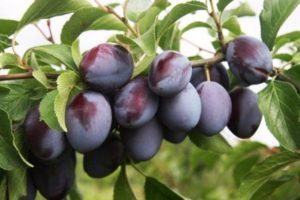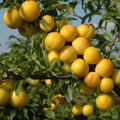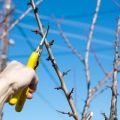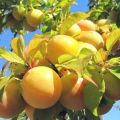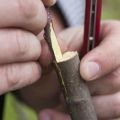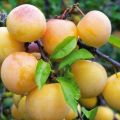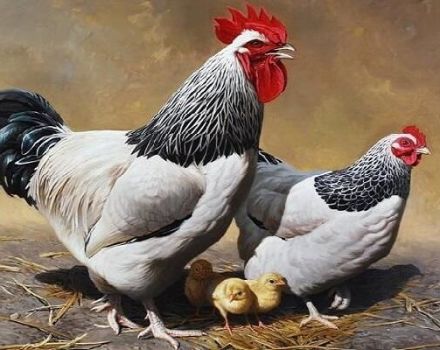Planting and caring for plums in Siberia, which varieties are better to grow
The Siberian climate is a real challenge for gardeners and gardeners. It is not easy to harvest fruits and vegetables here, even with proper care. Not every plant variety is capable of producing a crop in a short summer. Plum in cold Siberia, planting and caring for which in other regions is not very difficult, needs special care. In addition, it is necessary to choose the right variety, the fruits of which will have time to ripen before the onset of cold weather.
Climatic features of the region
The climate of Siberia presupposes the cultivation of extremely cold-resistant plant species. Breeders have bred many types of plums that correspond to this indicator, but at the same time are characterized by other disadvantages:
- due to frequent temperature fluctuations in trees, the buds freeze up, therefore, only varieties with a long dormant period can be planted in a cold climate;
- strong winds dry up the shoots;
- the absence of severe frost and an abundance of snow contribute to the rapid death of the lower part of the plum trunk, while even snow removal does not save the day: in this case, the root system freezes out.
After a series of studies, it was concluded that fruit trees are best grown in steppe regions or where there is a moderate amount of snow.
What varieties of plums are better to plant in Siberia
What plum in a dacha in Siberia not only does not freeze, but also gives a harvest? Clear business, frost-resistant and self-fertile. Many varieties are known that meet these characteristics.
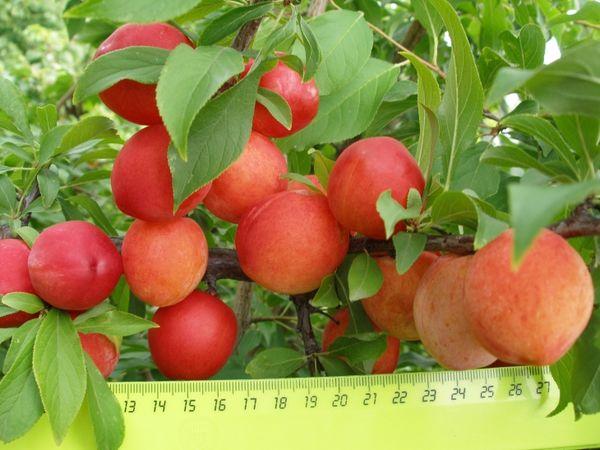
Frost-resistant varieties
The most hardy plum varieties that can withstand extreme temperature drops in Siberia are:
- Honey (withstands frosts down to -30 ° C);
- Fast-growing (tolerates cold up to -35 ° C);
- Bee;
- Mainor;
- Chulym;
- Admiral Schlei;
- Amateur (withstand cold temperatures down to -40 ° C and are hybrids of cherry and plum);
- Uvelskaya;
- Pioneer;
- Yellow Hopty (tolerates a temperature drop down to -50 ° C).
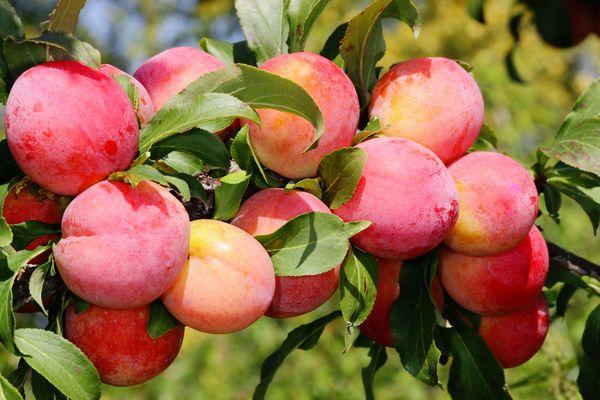
Self-fertile plum varieties
To obtain a rich harvest of plums in Siberia, it is recommended to give preference to self-fertile varieties that do not need additional pollination. It is advisable to present the best of them with a brief description in the form of a table.
| Variety name | Description |
| Hungarian | Plums up to 6 cm in diameter, purple when ripe. The yield is high. The tree grows up to 6 m, the crown is spreading |
| Greengage | Plum fruits up to 5 cm in diameter, when ripe, acquire a yellow-green or blueberry color. The tree is rarely affected by fungal infections, it grows up to 6 m |
| Red-cheeked | Plums 2.5 cm in diameter are yellow-orange with small red splashes |
| Dawn of Altai | Small-fruited variety. Plums are red-orange in color, ripening in August |
| Honey | Large greenish-yellow fruits. Winter-hardy variety |
| Mainor | Plums of maroon color, have excellent taste characteristics, are suitable for harvesting for the winter |
| Peresvet | Plums are small, orange in color with good taste. Fruit ripening occurs at the beginning of August. |
The best sweet varieties
In Siberia, sweet varieties of plums with excellent taste characteristics and attractive appearance are also grown. The best of them should be presented in the form of a table with brief characteristics.
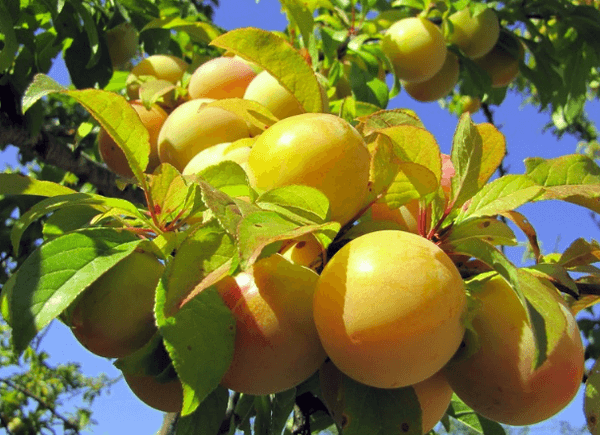
| Variety name | Characteristic |
| Manchu beauty | Fruits are colored fuchsia, have a pleasant sweet and sour taste |
| Altai anniversary | Pinkish plums with good taste |
| Oyuna | Fruits are pink. The variety is imported from China |
| Baikal amber | Very sweet type of plum with orange-amber fruits |
| Morning | Rounded yellow fruits. The variety has medium frost resistance. |
| Amusing | Plum has a high yield. Purple fruits |
| Valor | Plums are large, maroon color. Up to 30 kg of harvest is removed from an adult tree |
 Plum planting in Siberia
Plum planting in Siberia
Plum varieties for Siberia will please with the harvest only if they are chosen the right place for planting and proper care is provided. Planting a tree will not present much work, the main thing is to know some subtleties.
Seat selection
A good place for planting plums will be a hill, hillock or hillock in the southern, southeastern or southwestern part. The site should be protected from drafts and well-lit by the sun.
The groundwater must not be located closer than 1.5 m from the soil surface. It is unacceptable to plant a plum in the lowlands, because it is there that cold air accumulates, melt water flows down in spring. In places with heavy snowfalls, mounds are poured in the garden, on which seedlings are subsequently planted.
Planting pit preparation
For planting plums, soils with a neutral acidity level are suitable. If the soil in the garden is acidic, then the nutrients are poorly absorbed, as a result of which the tree develops poorly and almost does not bear fruit.
Before planting, it is imperative to deoxidize the soil by adding fluff lime into it. In the future, the procedure will need to be repeated every 2-3 years.
Light loamy soil is best for growing plums. To improve its structure, leaf humus can be used. It is important not to overdo it with fertilizers, otherwise the seedlings will fatten, release many extra shoots, be susceptible to pests and will not tolerate wintering well.
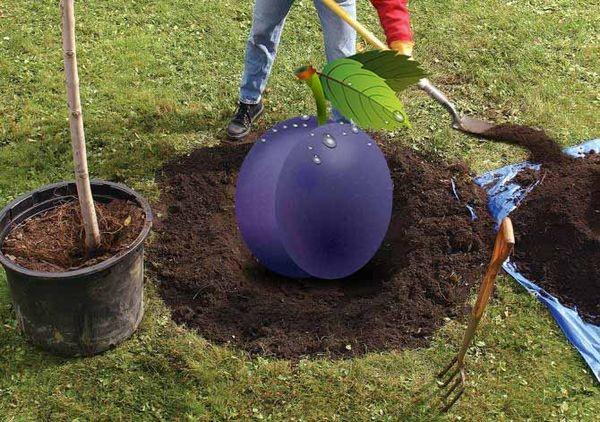
If the soil is depleted, then a bucket of compost, a little wood ash, superphosphate, lime, potassium sulfate are added to the dug hole 0.6 m in size. If the ground is heavy, then a bucket of sand is also poured into the landing pit. All components are thoroughly mixed, and then sprinkled with light and clean soil.
Timing and technology of planting seedlings
As soon as spring comes and the weather is warm, earth is poured into the prepared hole and a plum sapling is placed on the resulting mound. The roots are straightened down. The root collar should be located either level with the ground, or buried to 7 cm. The plant thus established is sprinkled with light soil without fertilizers.
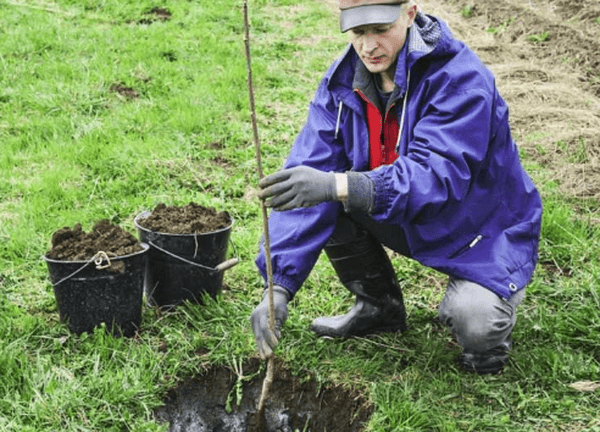
To prevent stagnation of water near the trunk, it is not necessary to form a deep near-trunk circle.The seedling is tied to a peg installed next to it and watered abundantly (at the rate of 2-3 buckets of water per 1 plum). As soon as the moisture is absorbed, the soil around is mulched. It is recommended to use for this both hay and dried vegetation, as well as compost, humus.
Planting a plum sapling in autumn in Siberia is highly undesirable. Due to the early onset of frost, the tree will not have time to take root well and will die. If such an urgent need arose, then he needs to provide good shelter and try to carry out planting work as early as possible.
Growing and care
Plum care in different regions of Siberia may differ. The features of the microclimate are taken into account. In harsh climates, organic fertilizing, irrigation and pruning are reduced to a minimum.
Watering and fertilizing
Immediately after planting, plums are watered once every 7 days. Saplings 2 years old and older are irrigated only 3 times per season. The amount of water required is selected so that it penetrates into the soil to a depth of 30 cm.
On average, this requires 4 buckets of liquid. Excessive moisture provokes the appearance of pests. The first irrigation is carried out in mid-May, the second - after the end of the flowering period, the third - as soon as the fruits begin to ripen. If autumn turns out to be dry, then in the middle of the season the plums are watered again so that they better endure the cold winter.

With the correct planting of plums and a sufficient amount of fertilizers applied, the tree is fed 2 times a year. In the autumn, fertilizers are applied with a high content of potassium and phosphorus. With the onset of spring, the plant needs nitrogen and magnesium. Healthy farming advocates can benefit from organic:
- humus;
- wood ash;
- turf;
- manure.
Tree pruning and overgrowth removal
In Siberia, pruning of plums is carried out once every 3 years. Remove dried twigs from fruiting plants. Every spring, sanitary pruning is carried out, which means the removal of shoots that have been badly damaged by winter frosts. You can not remove more than 30% of the branches.
To make the shape of the tree look neat and well-groomed, all side shoots should be cut off, leaving only one of them - the most beautiful. In the spring, the root growth is cut, which interferes with the normal growth and development of the plum.
Pest and disease control
In Siberia, the plum is affected by the moth, aphids and sawfly. In order to prevent damage to the crop and prevent trouble, preventive treatments with special-purpose drugs should be carried out in time. They are purchased at gardening stores. The trunk of a tree is whitewashed with a solution of slaked lime. From folk remedies, the invasion of pests helps prevent chamomile decoction, which is sprayed and watered with plums.
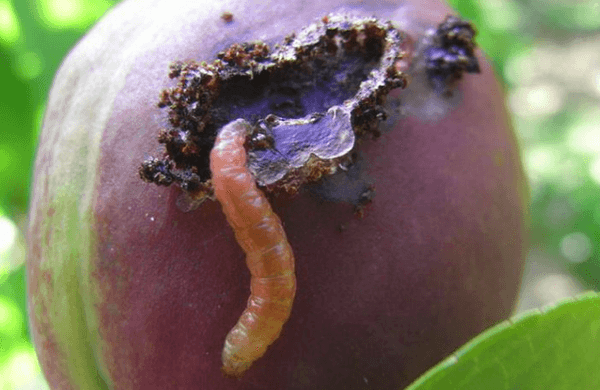
If brown spots become noticeable on the foliage, then this may be a sign of damage to the tree by clasterosporiosis. You can fight the disease by treating with fungicidal or insecticidal preparations.
Feathered friends help to cope with harmful insects. You can place a birdhouse on the drain, but you must definitely feed the birds. Otherwise, they can damage ripening fruits.
Prevention of freezing of the earth
Preparations for the winter season begin a couple of weeks before the onset of cold weather. The trunk circle is fertilized with organic matter. For these purposes, humus, potassium sulfate and wood ash are mixed. Previously, using a shovel, they slightly dig up the soil and loosen it, then add the prepared nutrient mixture and water the plum with 3 buckets of water.
After carrying out these procedures, they begin to examine the crown and the tree itself. Dry branches are cut, and the raised and spoiled bark is carefully removed with a metal brush or scraper. It is important not to damage the healthy parts of the plum trunk.
So that in the cold season the plant is not annoyed by pests that like to settle under the bark, it is treated with a specially prepared solution. You can buy it ready-made in the store or make it yourself. For this, mullein, clay and lime are mixed in equal parts. If necessary, add copper sulfate at the rate of 25 g per 1 liter of solution.
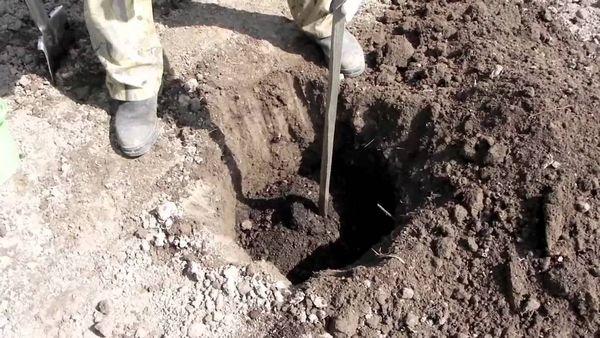
Before the onset of cold weather, the near-stem circle of the plum must be insulated. Burlap or straw is used for these purposes. If the winter is expected to be very cold and harsh, then roofing material or slate is laid on the ground. It is advisable to hide a low-growing seedling in a hut from available materials at hand.
It should be remembered that strong gusts of wind can disrupt the shelter and damage the drain, therefore it must be properly secured by driving several pegs into the ground and tying a hut to them.
What to consider when growing plums in the eastern regions
In Siberia, summers are unpredictable, and winters are long and cold. This climatic feature must be taken into account by gardeners who want to get a harvest of plums on their site. For this tree, it is more comfortable where the snow cover is not too abundant. It is not afraid of the winter cold, spring temperature jumps do much more harm. After all, frost-resistant varieties can easily withstand the Siberian drop in temperature in winter, but spring return frosts kill the buds.
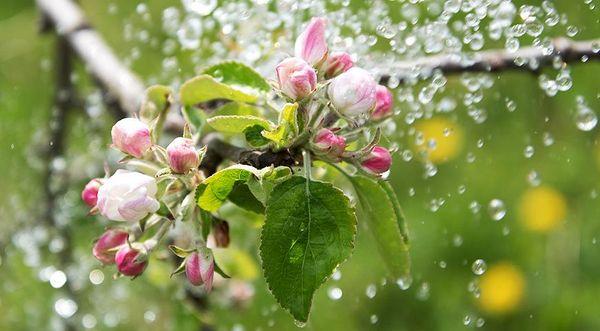
For cultivation in the eastern part of Siberia, plum varieties are selected that are dormant for a long time and slowly come out of it. In this area, trees often suffer from bark decay at the bottom of the trunk. Freezing of the roots also often occurs.
If a lot of snow falls, then the bark of the plum tree gradually dies under drifts. Its harvesting gives rise to another problem: freezing of the root system. Experienced gardeners resort to a solution such as freezing the soil. It allows not only to prevent damping out, but also to prevent the seedling from freezing.
In severe cold, frosting of the plum crown occurs, therefore it is recommended to focus on a long-term forecast and, if necessary, use covering materials or spruce branches.
In the east of Siberia, tree varieties are grown not only with increased frost resistance, but also with good resistance to fungal diseases. Those who have a summer cottage and their own garden pay attention to the characteristics of annual shoots, since it is they who often suffer from the winds and quickly dry out.
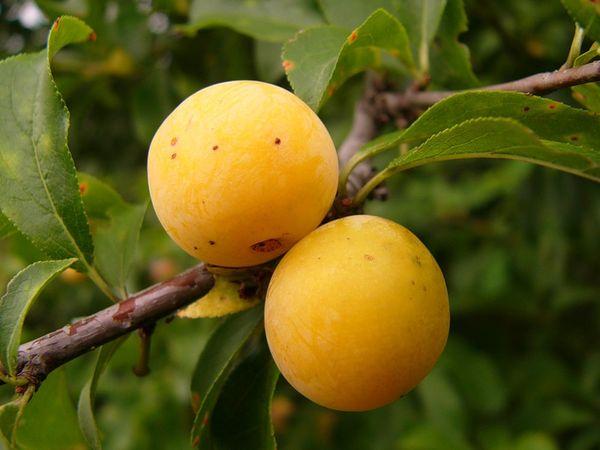
Plums are harvested in the eastern part of Siberia in late July - early September. The exact timing can only be established by studying the characteristics of the selected variety. Weather conditions have a certain effect on them. Fruiting of a seedling occurs 3-4 years after planting on the site. Plum lives for about 20-25 years. After the tree reaches its peak yield, this figure gradually begins to fall. Over time, the plant dries out completely.
Experienced gardeners of eastern Siberia practice independent breeding of their favorite varieties by grafting plums onto seedlings from Canadian or Ussuri species. They have excellent frost resistance indicators. In addition, these varieties endure all the troubles of local climatic conditions. But even such trees need protection and proper care.
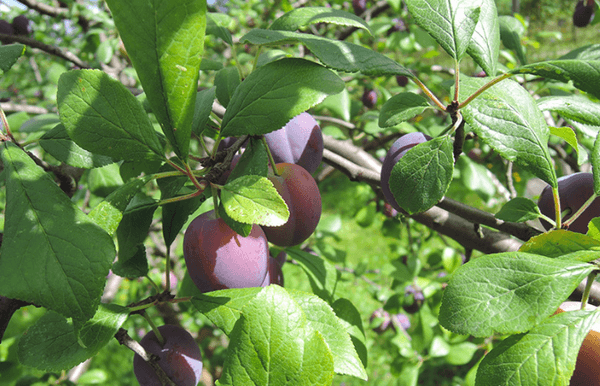 Plum planting in Siberia
Plum planting in Siberia